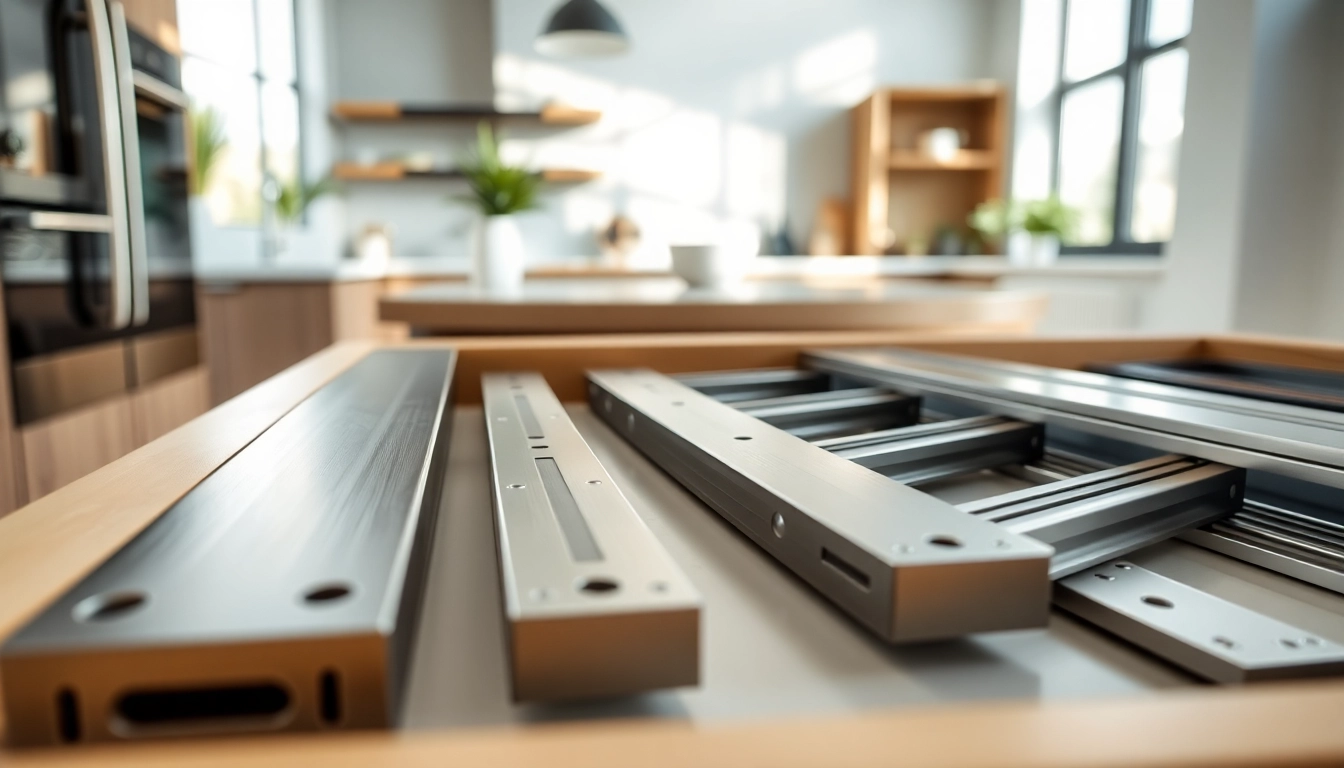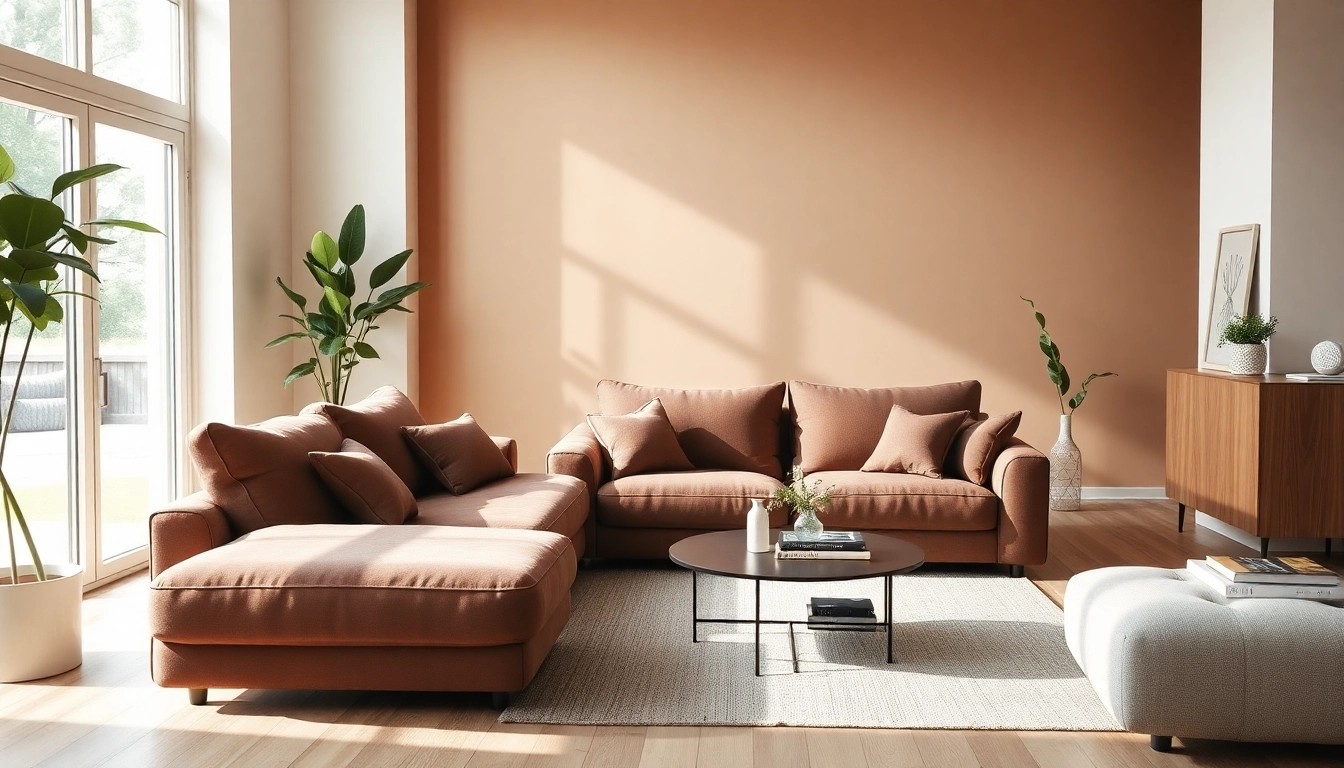Understanding Metal Drawer Systems
Definition and Components of Metal Drawer Systems
Metal drawer systems are integral components in modern cabinetry and furniture, designed to enhance functionality, durability, and aesthetic appeal. Unlike traditional wooden drawers, metal drawer systems use materials such as steel or aluminum to provide a sturdier framework. The main components of these systems include:
- Drawer Box: Usually crafted from high-quality metal, providing strength and rigidity.
- Slides and Runners: Essential for smooth operation, they can be ball-bearing slides for enhanced gliding or undermount options for a hidden look.
- Front and Back Panels: Typically feature a sleek design that enhances the overall appearance of the drawer system.
- Assembly Hardware: Includes brackets, screws, and connectors that allow for easy installation and adjustment.
Overall, the combination of these components creates a functional and reliable Metal Drawer System suitable for various applications.
Advantages of Using Metal Drawer Systems
Metal drawer systems offer numerous advantages over traditional wooden counterparts:
- Durability: Metal is resistant to warping, cracking, and other wear and tear which often affect wood.
- Load-Bearing Capacity: Metal systems are designed to handle significant weight without compromising integrity, making them ideal for heavy-duty applications.
- Maintenance: They’re easier to clean and maintain, requiring only occasional wiping to keep them looking pristine.
- Design Flexibility: Available in various finishes and styles, they can complement any interior design.
- Eco-Friendly Options: Modern metal drawer systems can be manufactured from recycled materials, supporting sustainability efforts.
Common Applications for Metal Drawer Systems
Metal drawer systems are versatile and can be found in a wide range of applications, including:
- Residential Use: Used in kitchens, bathrooms, and living areas for storage solutions.
- Commercial Applications: Ideal for office furniture, effectively storing documents and supplies.
- Industrial Settings: Often used in warehouses and manufacturing plants, where durability is essential.
- Garage Storage Systems: Perfect for organizing tools and equipment due to their robustness.
Choosing the Right Metal Drawer System
Factors to Consider When Selecting Metal Drawer Systems
When selecting a metal drawer system, consider the following factors to ensure you choose the best option for your needs:
- Size Dimensions: Ensure the drawer fits within the intended space and can handle the expected load.
- Slide Type: Decide between side mount or undermount slides based on user preference and aesthetic goals.
- Finish and Color: Choose a finish that complements existing decor and withstands wear, such as powder coating or stainless steel.
- Weight Capacity: Confirm that the drawer system can support the anticipated weight for the items being stored.
- Ease of Installation: Some systems are designed for DIY installation, while others may require professional assistance.
Comparing Different Types of Metal Drawer Systems
There are various types of metal drawer systems, each offering distinct features:
- Full Extension Slides: Allow the drawer to fully extend, providing access to the entire contents, worth considering for frequently used items.
- Soft-Close Mechanisms: Prevent slamming, contributing to a quieter and more refined user experience.
- Box Drawer Systems: Enclosed designs that provide a sleek appearance often found in modern kitchens and aesthetics.
- Heavy-Duty Systems: Built for commercial and industrial applications, these can handle extremely heavy loads without issue.
Top Brands for Quality Metal Drawer Systems
Several reputable brands are known for their high-quality metal drawer systems:
- Blum: Offers innovative designs with features like their “Tandembox” system that combines style with functionality.
- Häfele: Provides a wide array of drawer systems that mix modern styling with practical solutions.
- Knape & Vogt: Known for durable options suitable for commercial furniture applications, focusing on customization.
- Grass: Features systems like the “ZBox” that merge functionality with contemporary design.
- Comtrad: Offers a range of metal drawer systems ideal for various industrial applications.
Installation Tips for Metal Drawer Systems
Step-by-Step Installation Guide
Installing a metal drawer system can be straightforward if you follow these steps:
- Prepare the Workspace: Ensure you have all necessary tools, including a drill, screwdrivers, and measuring tape.
- Measure and Mark: Take precise measurements of the space where the drawer will be installed and mark the spot for better accuracy.
- Assemble Components: Follow manufacturer instructions to assemble the drawer box and slides.
- Install the Slides: Attach the slides to the cabinet’s side panels, ensuring they are level and securely fastened.
- Attach the Drawer: Place the assembled drawer onto the slides and check for smooth operation.
- Final Adjustments: Make any necessary adjustments to ensure the drawer opens and closes smoothly.
Common Mistakes to Avoid
While installing metal drawer systems, avoid these common pitfalls:
- Neglecting Measurements: Always double-check dimensions to avoid installation issues.
- Improper Weight Distribution: Ensure the drawer’s load is evenly distributed to prevent lean or falling.
- Ignoring Manufacturer Guidelines: Not following instructions can lead to installation angles that compromise functionality.
- Skipping Leveling: Make sure slides are level to ensure smooth operation; poorly aligned slides can jam.
Maintenance Tips for Longevity
To maintain your metal drawer systems and extend their lifespan:
- Regular Cleaning: Wipe down the exterior and interior of drawers to remove dust and grime.
- Check for Loose Components: Regularly inspect slides and screws, tightening them as needed.
- Lubricate Slides: Apply lubricant to moving parts to maintain smooth functionality.
- Avoid Overloading: Follow weight limits to prevent accidental damage and ensure longevity.
Metal Drawer Systems vs. Other Drawer Systems
Comparative Analysis with Wood and Plastic Drawers
When choosing between metal, wood, and plastic drawer systems, consider the following comparisons:
- Durability: Metal systems outlast wood and plastic options, which can warp or break over time under stress.
- Maintenance: Metal systems require less maintenance compared to wooden drawers that may need refinishing over time.
- Aesthetics: While wood offers a warm look, metal provides a sleek, modern appearance preferred in contemporary designs.
- Cost: Metal systems can be more upfront in cost but often prove to be more cost-effective long-term due to their durability.
Cost-Effectiveness of Metal Drawer Systems
While the initial investment in metal drawer systems can be higher compared to wood and plastic options, their overall value is evident in:
- Longer Lifespan: Reduced replacement costs due to durability and resistance to damage.
- Lower Maintenance Costs: Less frequent need for repairs and no need for refinishing or repainting.
- Increased Functionality: Metal systems often provide better storage solutions, maximizing space efficiency.
Durability and Performance Metrics
In assessing durability and performance, metal drawer systems excel in:
- Load Capacity: Many systems can support 100 pounds or more, surpassing the average wooden drawer.
- Resistance to Elements: Metal drawers resist moisture and humidity, making them suitable for kitchens and bathrooms.
- Wear Resistance: Coatings can prevent scratching and corrosion, maintaining a like-new appearance for years.
Future Trends in Metal Drawer Systems
Innovations and Technology in Drawer Systems
The future of metal drawer systems is bright, with innovations such as:
- Smart Technology Integration: Drawer systems with built-in sensors for monitoring load and alerting users to issues.
- Enhanced Customization Options: Manufacturers are beginning to offer customizable drawer sizes and configurations.
- Advanced Slide Mechanisms: Developing quieter and faster sliding systems for improved user experiences.
Eco-Friendly Options for Metal Drawer Systems
Sustainability is an emerging aspect within the metal drawer systems market, with trends including:
- Recycled Materials: Many manufacturers are prioritizing recycled metals in their product lines.
- Environmentally Friendly Finishes: Non-toxic, water-based finishes that reduce environmental impact are being adopted.
- Recyclable Products: End-of-life considerations, with systems designed for easy recycling.
Predicted Industry Trends and Consumer Preferences
As consumer preferences evolve, metal drawer systems may witness significant trends focusing on:
- Minimalist Designs: An increase in demand for sleek and simple cabinetry styles.
- Integrated Storage Solutions: Consumers favoring multi-functional furniture pieces that maximize space efficiency.
- Customization: A growing desire for personalized designs that reflect individual styles and needs.



